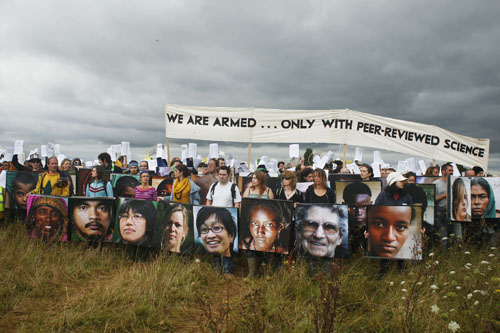This article is part seven of a seven-part series that focuses on how sustainability impacts students on a college campus. This series will go in-depth on topics that intersect with sustainability, such as energy use, food waste, environmental racism, recycling, compost and more.
Students, especially those with white privilege, must be intentional in taking the time to learn and understand how racism is embedded within the U.S. federal, state and local policies. Racism is intertwined in every vein of life, and it must be addressed to dismantle harmful policies. The first step that students can take to fight against environmental injustices is to educate themselves.
Knowing the intersection between the environment and racism is important. Environmental racism became a popular term in the 1970s during the environmental justice movement. It refers to the disproportionate impact of environmental hazards on the BIPOC community. Many live near toxic waste sites, landfills, power stations, major roads that emit fossil fuels and other pollutants.
“In order to make a difference, one must understand the subject matter. This can be achieved by spending time on issues that reflect real-life versus things that we have spent years learning in classes. Not being more strategic with our curriculum is a huge disservice to the current generation of students who will be responsible for the future of our planet,” said Rosalynn Feagins—the co-chair of the Staff of Color Association (SOCA).
Racial inequalities impact one’s access to resources and ability to maintain a healthy and happy lifestyle. They affect housing, air quality, health care and finances. The inequalities are prevalent, and as students graduate and join the workforce, it is vital they are aware of these biases and discriminatory factors in their field of work.
“All students can make a difference by ‘connecting the dots’ with environmental racism and other issues that they care about or are learning about,” said associate professor for DU’s graduate school of social work Lisa Reyes Mason. “For example, are you going into health care? Look at how childhood asthma rates are racially disproportionate and connected to air pollution and where polluting sites are located. Heading to the private sector, maybe the financial industry? What role can community banking play in ‘greenlining’ and supporting social, economic and environmental justice in communities of color that have been marginalized by racist policies?”
There are a number of ways to get involved. Despite the limitations of COVID-19, students can access meetings and educational information online. This includes attending City Council meetings, staying up-to-date on the news, watching documentaries, etc.
“My biggest piece of advice is to get involved with the city council. This is easily accessible on Zoom. People do not realize how much the city council controls, such as funding and zoning,” said Alicia Mountain, a graduate student and researcher for DU’s Center of Sustainability.
Students can access their weekly meetings on Zoom. These meetings are a productive method of learning who is on city council. This will help students to be more informed when voting for the new members of the city council in May.
“Engage, organize and advocate. Volunteer with a local organization leading this work already, advocate for less air pollution and more sustainable transit in Denver, speak up about climate injustice and the need to more rapidly draw down greenhouse gas emissions. Find a way to take concrete action—there are so many possibilities,” Mason said.
There are a wide range of local climate justice organizations—including Earthworks, 350 Colorado, Colorado Communities for Climate Action, Environment Colorado and Rocky Mountain Peace and Justice Center—that can be worked with in the metro area.
There is no easy “fix” to these environmental injustices. This advocacy work is notably placed on the BIPOC community, as they are often expected or forced to advocate for themselves. White people must recognize their responsibility to advocate for the BIPOC community and work towards changing policies and initiatives within the government.
“The big policy initiatives, like the Green New Deal, can help with parts of environmental racism, but it leaves out issues with zoning. It is important to focus on changing policies at a local and state level as well,” said Anna Craggs, a social work graduate student and fellow for DU’s Center of Sustainability.
To create this change at a local and state level, students in Colorado should call or email any legislators of the General Assembly. The regional environmental justice contacts for Colorado can also be easily contacted.
Magenta Freeman is an associate to Black Lives Matter 5280 and a member of the Alliance Center, a regenerative recovery coalition. A few tips from her are to “Get involved if you have the capacity and time. Be aware and open to opinions, and consider other viewpoints. Think of how you contribute to environmental injustices, and then shift as much as you can and vote with your dollars.”
“Voting with your dollars” means spending money at companies that align with sustainable and equitable values and support the communities you are advocating for. In Denver, there are many Black-owned businesses you can support.
There are a multitude of educational resources online, such as healing toolkits for the BIPOC community, a list of leaders to call and hold accountable and petitions to be signed, TV shows to watch, books to read and other resources.
The process of dismantling these environmental injustices will be difficult and complex. Whether people choose to acknowledge it or not, environmental racism is pervasive in day-to-day life. Now that I have finished this seven-part series, I hope to continue to stay educated, use my voice to stand up for marginalized communities and vote with my dollar.
“Environmental racism is ingrained in this country. But we cannot let that daunt us from fighting it, dismantling it and coming together to pursue change,” Mason said.











